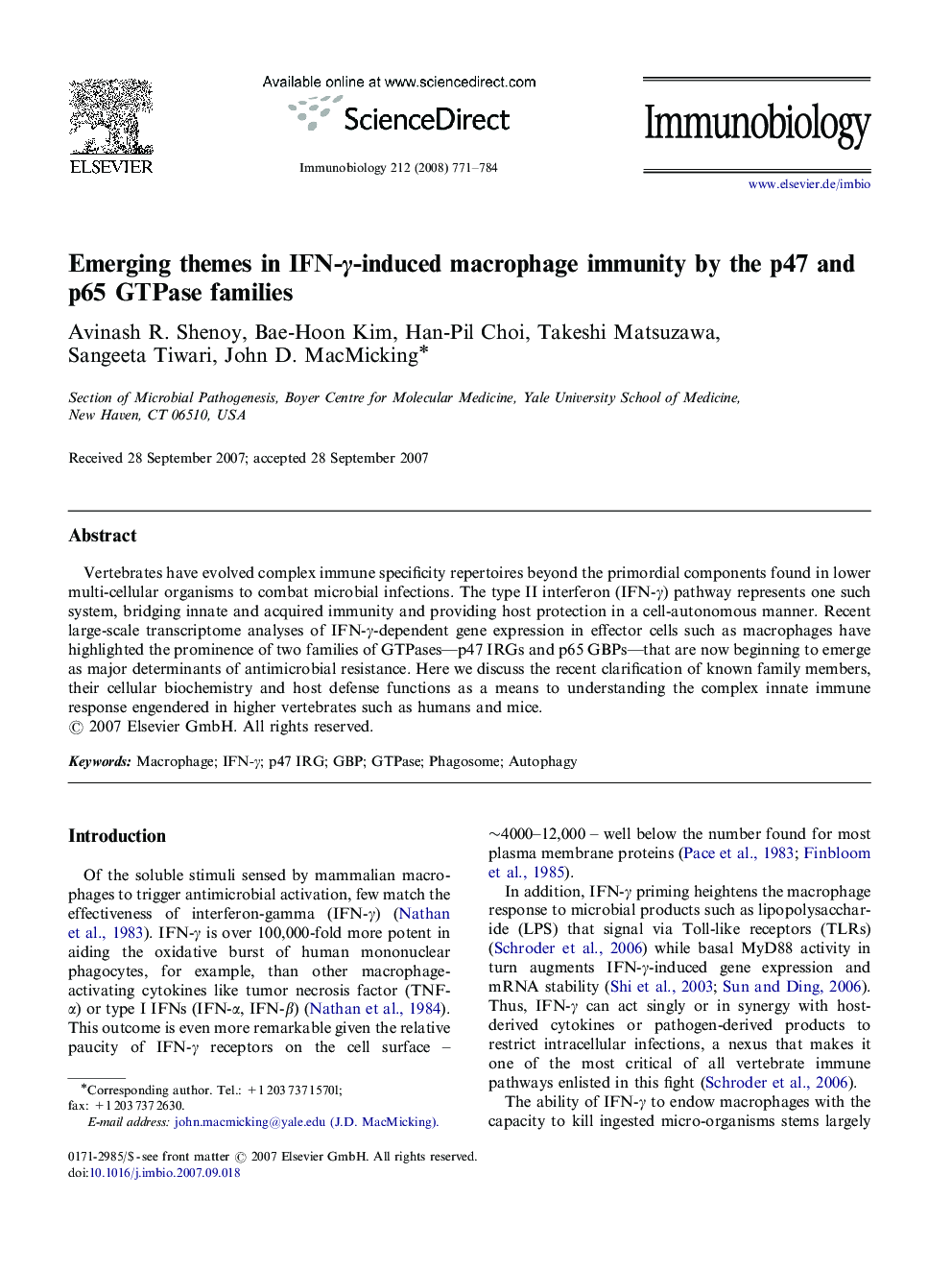| Article ID | Journal | Published Year | Pages | File Type |
|---|---|---|---|---|
| 2183916 | Immunobiology | 2008 | 14 Pages |
Vertebrates have evolved complex immune specificity repertoires beyond the primordial components found in lower multi-cellular organisms to combat microbial infections. The type II interferon (IFN-γ) pathway represents one such system, bridging innate and acquired immunity and providing host protection in a cell-autonomous manner. Recent large-scale transcriptome analyses of IFN-γ-dependent gene expression in effector cells such as macrophages have highlighted the prominence of two families of GTPases—p47 IRGs and p65 GBPs—that are now beginning to emerge as major determinants of antimicrobial resistance. Here we discuss the recent clarification of known family members, their cellular biochemistry and host defense functions as a means to understanding the complex innate immune response engendered in higher vertebrates such as humans and mice.
